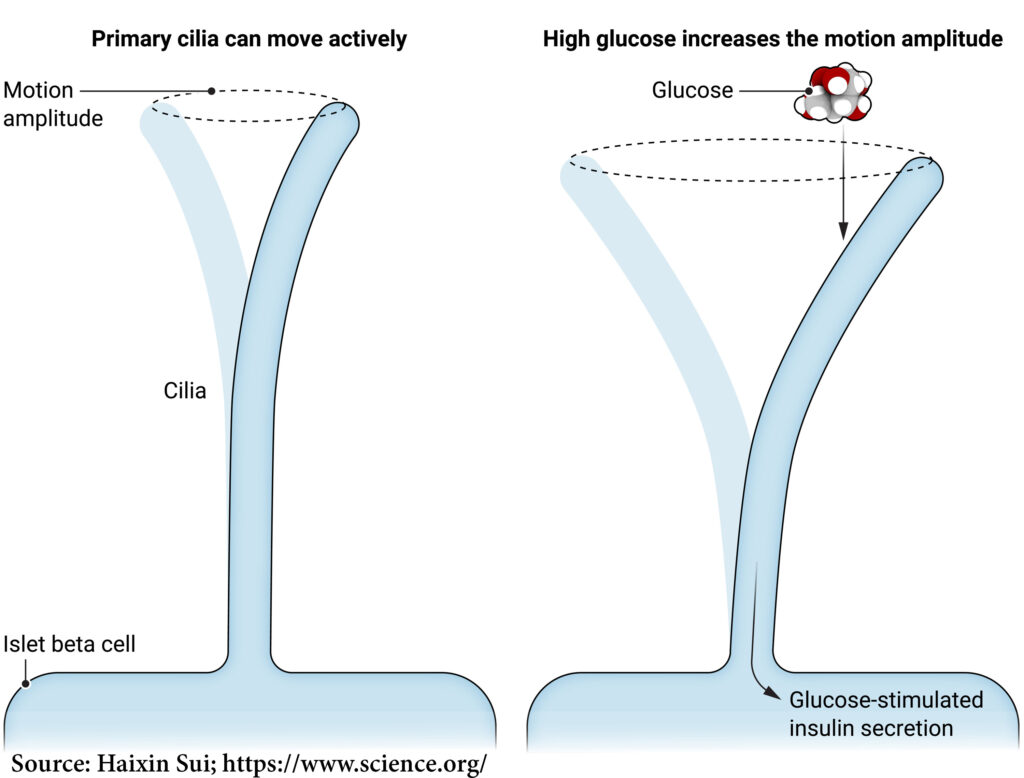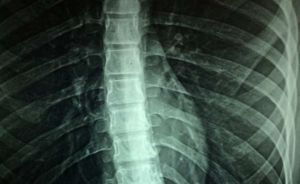A lead to New Understanding of Diabetes
3 min readWe all know that eukaryotic cilia, which are slender hair-like projections, are classified into motile and nonmotile types. Primary cilia of pancreas, which are believed to be nonmotile passive sensors, mediate cellular interactions with the surrounding environment and maintain tissue homeostasis. The studies (F. Volta et al., 2019 and C. T. Wu et al., 2021) confirm the involvement of primary cilia in pancreatic β cells in glucose homeostasis. But their functional roles and the mechanisms of actions are unclear. Recent study conducted by Cho et al., 2022 shows that primary cilia in human and mouse pancreatic islets exhibit movement that is required for glucose-dependent insulin secretion. They also link the motility of the β cells cilia to glucose sensing, which is critical in the physiology of blood sugar level regulation. Inhibition of cilia motion blocks β cell calcium influx and insulin secretion. Human β cells have enriched ciliary gene expression, and motile cilia genes are altered in type 2 diabetes. Their findings redefine primary cilia as dynamic structures having both sensory and motile function and establish that pancreatic islet cilia movement plays a regulatory role in insulin secretion. This insight could lead to new understanding of diabetes.

The researchers used live-cell imaging of both human and mouse to characterize the motility of pancreatic β cell cilia and its dependence on glucose. The study suggests that the motility of the β cell primary cilia is affected by glucose concentration and is associated with the Ca2+ response, which is critical to insulin secretion. On the basis of their study, they concluded that the cilia motility is an essential aspect of β cell function. This concept is confirmed by the observation that the cilia motility genes are enriched in human β cells and their expression was altered in type 2 diabetes (T2D), a disorder often characterized by insulin secretion. The demonstration of motility gene enrichment in β cells across the human age group strongly suggests a role of islet cilia motility on human health. This study raises the possibility that cilia dysmotility may be a pathway to islet dysfunction and offers a new therapeutic target for human metabolic diseases. They opined that the study presented with a limited bioinformatics analyses and suggest a more comprehensive study of cilia gene expression in human islets to compare disease-correlated changes across multiple T2D datasets. This study opens up a new opportunity for researchers to understand the primary cilium motility and its potential roles in the sensory functions of other cell types also.
Dr. Anand R.
Senior Scientific Officer, KSTA
contactksta@gmail.com
References:
F. Volta, M. J. Scerbo, A. Seelig, R. Wagner, N. O’Brien, F. Gerst, A. Fritsche, H. U. Häring, A. Zeigerer, S. Ullrich, J. M. Gerdes, 2019. Glucose homeostasis is regulated by pancreatic β-cell cilia via endosomal EphA-processing. Nat. Commun. 10, 5686
C. T. Wu, K. I. Hilgendorf, R. J. Bevacqua, Y. Hang, J. Demeter, S. K. Kim, P. K. Jackson, 2021. Discovery of ciliary G protein-coupled receptors regulating pancreatic islet insulin and glucagon secretion. Genes Dev. 35, 1243–1255
J. H. Cho, Z. A. Li, L. Zhu, B. D. Muegge, H. F. Roseman, T. Utterback, L. G. Woodhams, P. V. Bayly, J. W. Hughes, 2022. Islet primary cilia motility controls insulin secretion. Science Advances, Vol 8, Issue 38, eabq8486






